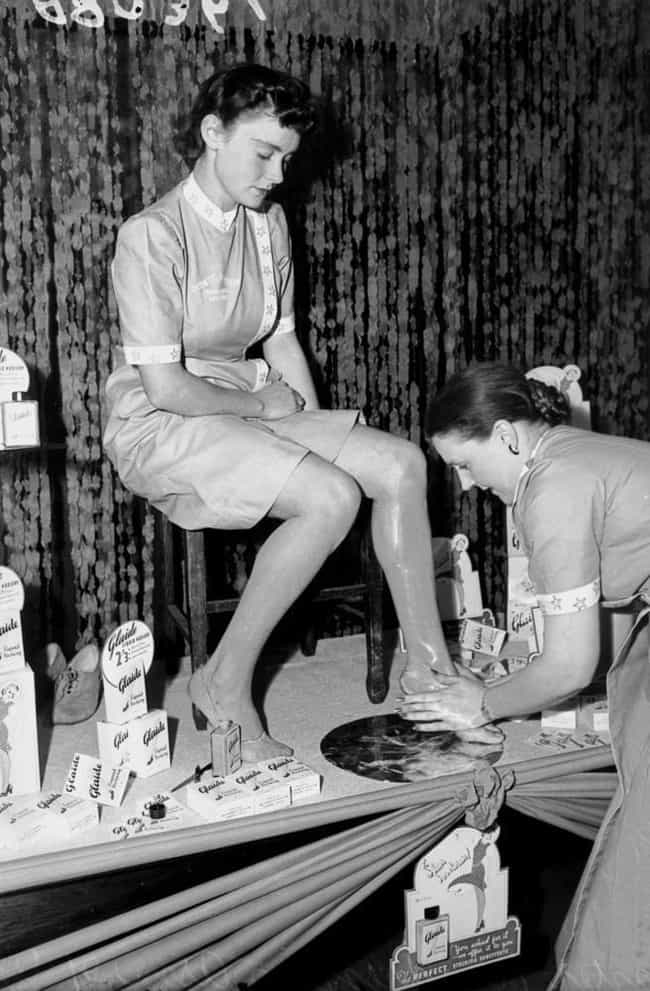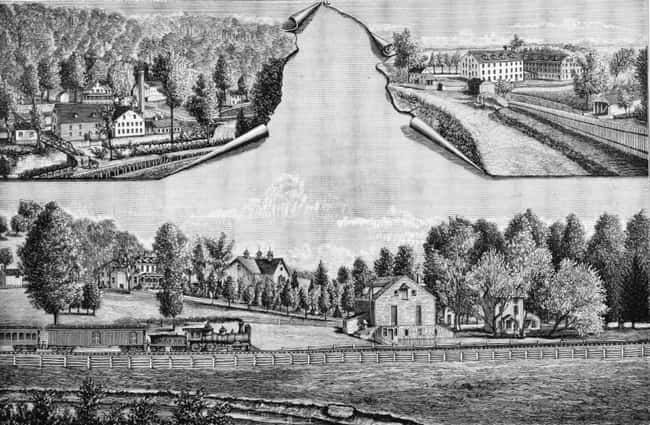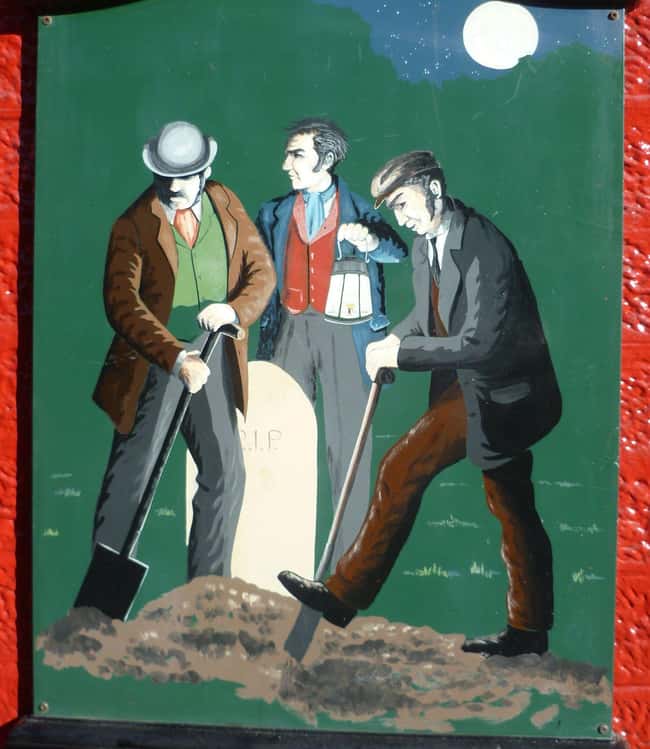Amid the COVID-19 outbreak of 2020, it shouldn’t come as news to anyone that markets will occasionally run short of something, and not just the staples like food, water, and toilet paper – sometimes it’s a lot stranger than that. The 21st century has already witnessed a kimchi shortage, a hazelnut shortage, and the brief disappearance of all Twinkies, and that’s just a sampling of the many items humanity has temporarily run out of in the wake of recent mitigating circumstances.
These shortages can come in many forms and be incited by wildly different events. The world is simply running out of certain products, like helium for party balloons, which has led to an ongoing dwindling of availability that will probably never be reversed. Other shortages, however – like a memorable incident in which Russia ran out of vodka for an entire day – are a lot sillier, though not without their own degree of seriousness.

In 1946, A Shortage Of Brushes To Paint Homes In Australia Led To ‘Operation Pig Bristle’
A lot of military missions have silly-sounding code names, but “Operation Pig Bristle” truly lives up to its strange title. In 1946, Australia found itself in a housing boom but suffering from an extreme shortage of paintbrushes with which to paint all those new homes – which led to the RAAF’s No. 38 Squadron being given a surprisingly dangerous mission to rectify the issue.
With China descending into a civil conflict, as well as being largely unmapped and difficult to access by air, the RAAF sent three planes on several missions to transport 25 tons of pig bristles – an important component in paintbrushes – back to Australia from Chungking over the course of two weeks. The mission involved one stretch of flying 1,100 kilometers from Hong Kong to Chungking uninterrupted. Operation Pig Bristle was a success, and the housing boom continued.
In 1958 And Again In The Modern Era, Helium Shortages Deflated Balloon Availability
The world is simply running out of helium, and has been for some time – and there’s a lot more at stake than birthday balloons. The first major shortage occurred in 1958, and was notable because it necessitated the balloons at the Macy’s Thanksgiving Day Parade being filled with air and toted around on cranes.
More serious shortages have occurred over the first two decades of the 21st century, with three major events grabbing headlines, most recently in 2019. And it’s a problem that doesn’t appear to be going away, with helium currently being processed at only 14 different natural gas refineries worldwide – and with most of those facilities falling behind in their ability to produce the substance. That’s bad news for birthday party planners, as well as those who use fiber optics, MRI machines, and airbags, all of which require helium.
In The 1500s, Britain Ran Out Of Firewood
The firewood shortage that rocked Britain in the 16th century isn’t a very mysterious one, but instead a simple case of deforestation. With an increase in demand for the other uses of wood products – namely ship-building, paper production, and building construction – the Brits started cutting down more trees than their limited forests could regrow in a timely fashion, leading to a firewood crisis that soon affected much of Europe.
At the time, firewood was of significantly greater importance to the average person than it is today, with the average British citizen being almost entirely reliant on it to heat their home. This shortage led to many deciding to take their chances in one of the new North American colonies where timber was still abundant, and there are some who credit the firewood shortage with the eventual birth of the United States of America.

During World War II, Women Had To Improvise Stockings When Nylon Was Needed For Military Equipment Like Parachutes
Nylon stockings hit the scene at the 1939 New York World’s Fair and became an instant sensation, with millions of sales made over the next couple of years – until the United States entered WWII in 1941 and nylons became yet another casualty. All nylon was set aside for the production of parachutes, ropes, netting, and other essential goods, and stockings were suddenly in short supply. Substitutes like so-called “liquid hosiery” just didn’t do the trick.
The demand became so intense that a nylon underground market developed for the duration of the conflict. When rationing ended in 1945, the response was so dramatic that “nylon riots” broke out across the country, with consumers desperate to get their hands on a new pair of hose.

In 2010, When The Cost Of Cabbage Skyrocketed, South Korea Suffered A Shortage Of Kimchi
In 2010, a bad growing season in China led to a worldwide shortage of napa cabbage. It was a particular problem for South Korea, where napa cabbage is an integral ingredient in the country’s national side dish: kimchi.
Made with a spiced and fermented cabbage, kimchi is such a staple in South Korea that many citizens eat it daily, so this shortage hit hard. As kimchi prices skyrocketed – leading some to dub it “geum-chi,” or “gold-chi” – the government stepped in to suspend import duties on cabbage. Others experimented in making kimchi with other ingredients, though this typically didn’t prove satisfactory.

During The American Revolution, Paper Was So Scarce That Mill Workers Could Be Exempt From Military Duty
During the American Revolution, as the use of paper in newspapers, books, and elsewhere ramped up significantly, shortages of paper became commonplace. When the Stamp Act of 1765 required that all material published within the colonies be printed on stamped paper, thus increasing the already inflated cost of paper, it was just one more reason to declare independence.
Paper shortages became an everyday issue that was not taken lightly. Having previously imported much of their paper from Europe, Americans were left to produce their own. Several states poured funds into the expansion of the industry, and some introduced rules by which trained paper makers and mill workers could be exempt from military duty – if they kept their brand-new nation rolling in sweet parchment.
In 2018, KFC Ran Out Of Chicken In The UK
When your company name (well, before it became known only by an acronym) has the word “chicken” in it, running out of the bird in question can be a major problem – as it was for KFC in the United Kingdom in 2018. The shortage was entirely internal – the result of KFC UK & Ireland switching delivery contracts to DHL, leading to mass delays in chicken shipment and the temporary closure of 600 restaurants.
As KFC tweeted out to its UK customers at the time, “The chicken crossed the road, just not to our restaurants.” The company also mentioned that “The Colonel is working on it,” and indeed he must have been – as the shortage only lasted a short while and soon KFC was back on its feet, though not without eating its fair share of criticism in the process.

In The 1800s, Medical Schools In Scotland Faced A Shortage Of Legally Sourced Cadavers
Legislation in 1823 dramatically reduced the number of legal executions in Britain, which is largely considered a positive – unless one was in the field of medical research. The law at the time ruled that medical students were allowed to work only with the cadavers of those who had been executed, so fewer executions quickly led to a shortage of available cadavers – and some gruesomely creative solutions to fill that need.
With medical schools offering ever-increasing amounts for cadavers – with few questions asked – several enterprising individuals took to robbing graves and selling the cadavers. When demand grew for fresher specimens, however, prospective cadaver-sellers turned to outright slaying to keep the supply strong. Two particularly infamous individuals, William Burke and William Hare, suffocated at least 16 people over the course of two years and sold their cadavers for approximately 10 pounds each.
When they were caught, Hare rolled over on Burke, and Burke was sentenced to hang – after which his body was given to the Edinburgh Medical School for anatomical research in one of history’s most fitting punishments.
Bad Weather That Limited Grazing Time In 2011 Led To A Butter Shortage In Norway
Norwegians received a nasty gift for the 2011 holiday season – a shortage of butter, one of their most beloved national products. The dearth of the delicious spread came after an inordinately wet summer that affected all of Scandinavia, resulting in lower-quality animal feed and thus lower milk productivity among the region’s cattle.
While the butter shortage affected other Scandinavian countries, like Sweden, it was felt most strongly in Norway, where one government-controlled co-op, Tine, produces 90% of the nation’s supply. The end result was an entire holiday season in which butter showed up sporadically on store shelves and was quickly snatched up by eager consumers, leaving everyone else with unbuttered Christmas buns.

In 1973, A Joke By Johnny Carson Resulted In A Toilet Paper Shortage
Even when the approximate origins of a supply shortage are known, narrowing the event down to a singular cause is typically an exercise in oversimplification. That is not the case, however, with the 1973 toilet paper shortage in the United States – which was the result of The Tonight Show Starring Johnny Carson and its opening monologue by host Johnny Carson:
You know, we’ve got all sorts of shortages these days. But have you heard the latest? I’m not kidding. I saw it in the papers. There’s an acute shortage of toilet paper!
The country was already experiencing a commercial toilet paper shortage, but Carson’s team of writers took some liberties to craft a few fairly innocent jokes about a general shortage – leading panicked consumers to take him at his word. When TP started flying off the shelves and stores ran out of stock, it only reinforced the narrative that the country was in the midst of a genuine shortage.
Some stores began rationing, which further heightened tension, until Carson himself took to the airwaves to apologize, saying, “I don’t want to be remembered as the man who created a false toilet paper scare. I just picked up the item from the paper and enlarged it somewhat… there is no shortage.”
In 2012, After Hostess Brands Went Bankrupt, People Hoarded Twinkies
When Hostess Brands Inc., the maker of Twinkies and other cherished American treats, announced bankruptcy and closure in 2012, consumers made a mad rush to their local supermarkets to get their hands on the cream-filled pastries before they were gone for good – no doubt motivated in part by the mythology of Twinkies’ unlimited shelf life.
Most stores quickly sold out, and customers eagerly bragged to the media about their hoarding of Hostess goodies, but the entire golden-brown rush proved to be an overreaction. Hostess and all of its brand holdings, including Twinkies, were purchased out of bankruptcy by the private equity firms Apollo Global Management and Metropoulos & Co. in 2013, and the snacks were back on store shelves by the summer.
During WWII In Britain, No One Had Bananas Because Ships To Import Them Were Being Used By The Military
Everyone had to tighten their belts due to rationing in WWII. Because the ships that would typically transport fruit from the warmer climes of the world to Europe and North America had all been co-opted into the military effort, yes, there were no bananas.
Though they were already one of the most popular fruits in the world, bananas almost completely disappeared from store shelves throughout the entire conflict; the only supply came from soldiers who managed to sneak a few with them when they returned home. Children born shortly before or during the conflict didn’t end up seeing their first banana until 1946 or later.

In 2011, The Japanese Tsunami Led To A Shortage Of High-Quality Tape For Film And TV Studios
A specific type of high-quality tape, Sony’s HDCAM-SR tape, has been used for a large portion of film and television production worldwide, and the product used to come from one factory only in Miyagi, Japan. That proved disastrous to the film industry in 2011 when an actual disaster, in the form of the now infamous earthquake and subsequent tsunami, caused massive damage to the facility.
When the news hit, various studios and production companies started buying up all the remaining stock of Sony tapes at greatly inflated prices, leading to an almost immediate shortage that couldn’t be quickly rectified. Once Sony got the factory back on its feet, it was back to business as usual – albeit with a greater impetus to find alternative methods of recording.
In 2017, Christmas Trees Were Scarce Due To The Recession Of 10 Years Earlier
The shortage of Christmas trees that struck the United States is still unfolding today, but it actually has its origins in the nationwide recession that lasted from 2007 to 2009. Those tough economic times convinced many in the agricultural business to greatly reduce how much they planted, but when your product takes a decade to mature, as is the case with trees, the impact of such a decision won’t be felt for years.
The US has already moved on from that recession – and possibly into another – and Christmas trees are now being planted with regular frequency again, but that can’t save the crops that weren’t planted in the past. By the 2020 holiday season, it is hoped that tree stocks might be back up to previous levels.
–
(For the source of this, and many other equally curious articles, please visit: https://www.ranker.com/list/strangest-shortages-in-history/stephanroget/)










